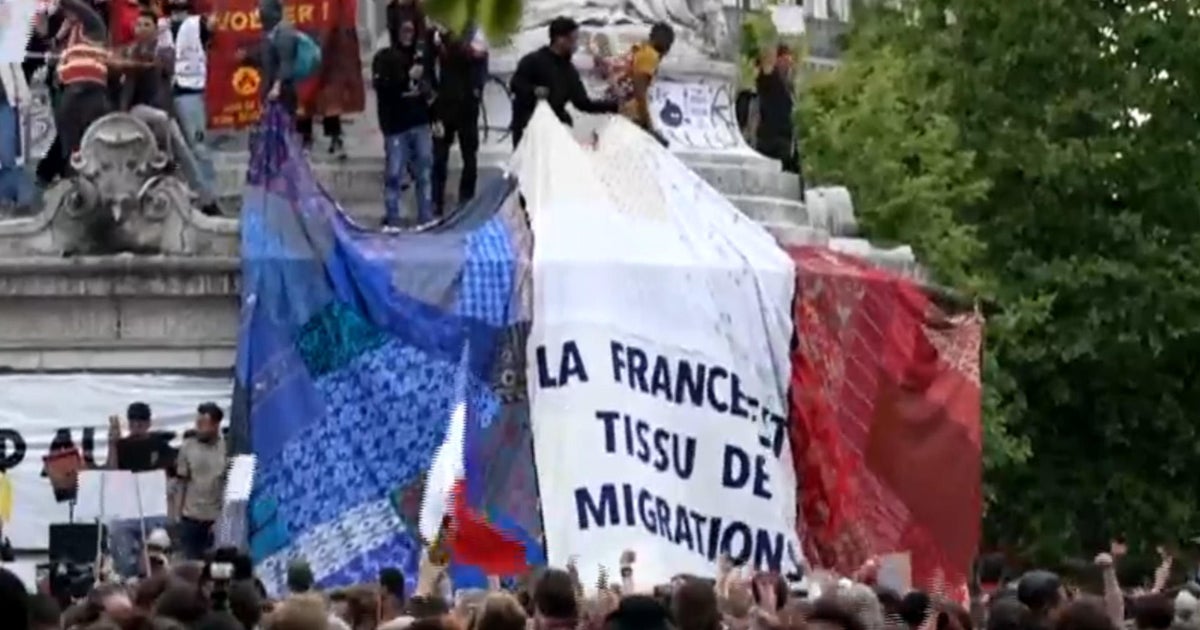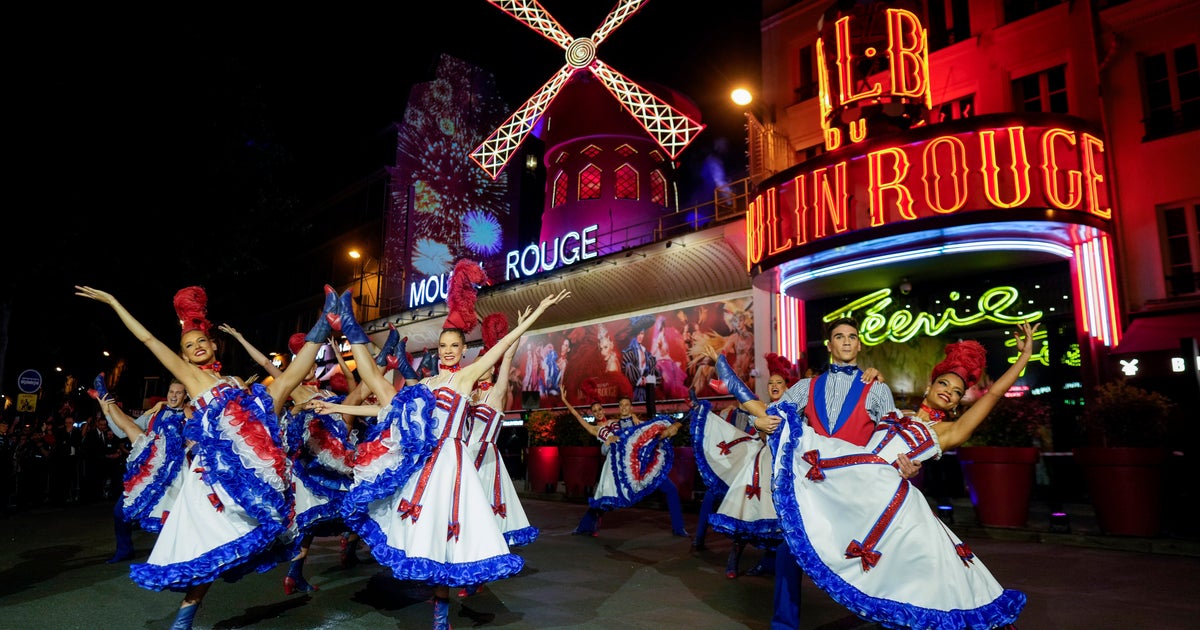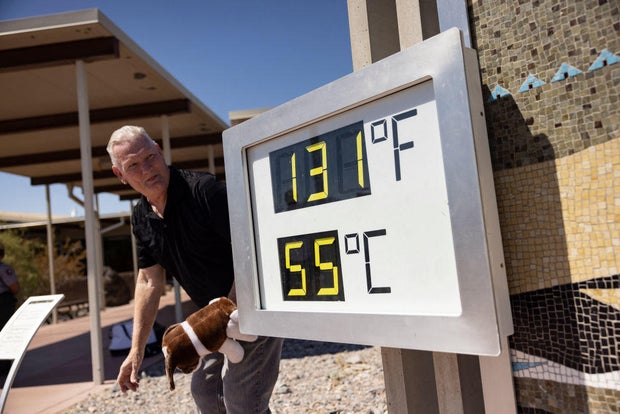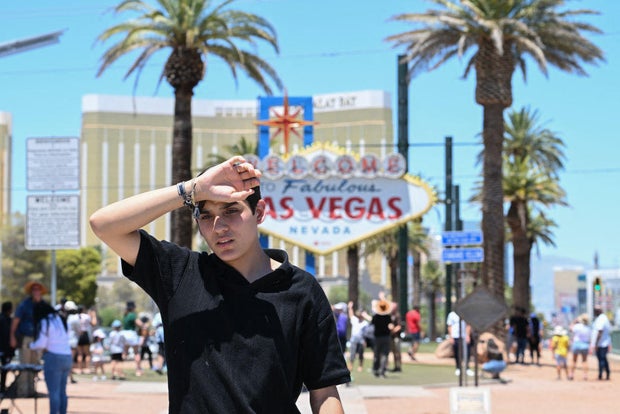CBS News
Olympic flame reaches France for 2024 Paris Olympics aboard a 19th century sailing ship
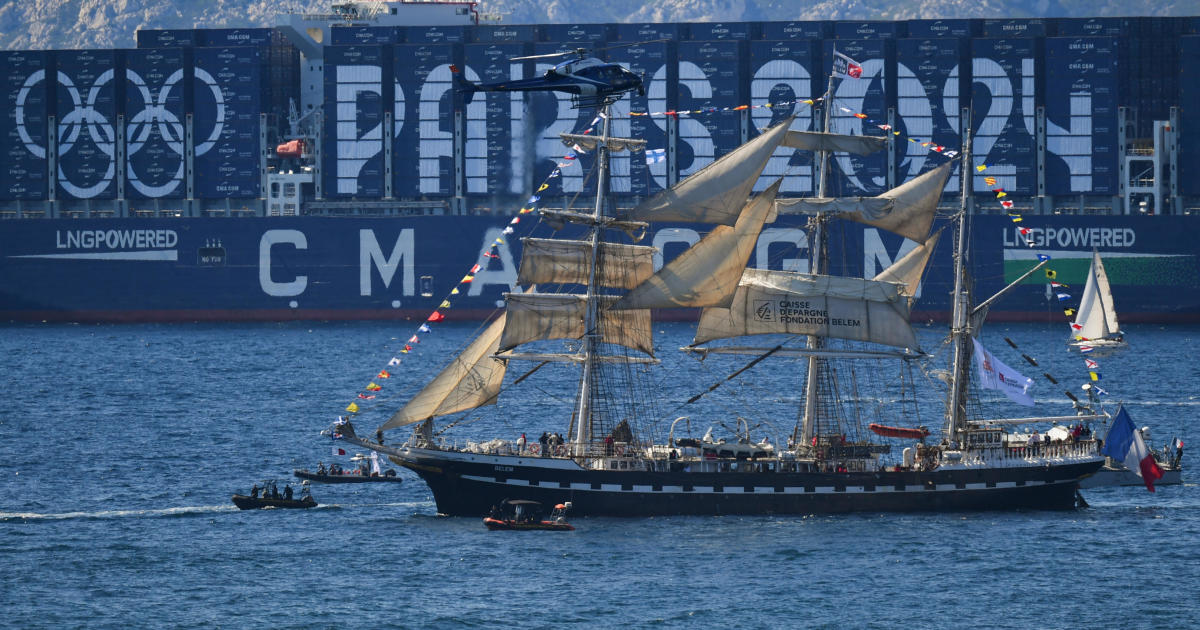
Paris — Crowds started gathering early Wednesday morning around Marseille’s Old Port as a 19th century sailing ship carrying the Olympic flame appeared on the horizon. More than 1,000 boats accompanied the Belem, a three-mast schooner, as it approached the harbor of France’s second-largest city in a slow maritime parade on calm seas under a clear blue sky.
The flame will be brought ashore Wednesday evening by four-time French Olympic medalist, swimmer Florent Manaudou. A surprise guest will then take it and light the Olympic cauldron at the Old Port in front of an expected crowd of 150,000 people.
City officials said a billion more people were expected to watch the event live on television around the world — a first spectacle for fans less than three months before the 2024 Paris Summer Olympics kick off on July 26.
Sylvain Thomas/AFP via Getty Images
Several sports stars will take part in the parade, including former NBA star Tony Parker and Ivory Coast soccer great Didier Drogba, as well as charity and entertainment figures. French President Emmanuel Macron was among those in Marseille to watch the arrival. Fireworks and a free open-air concert were set to continue into the night.
The flame was transported from Greece aboard the Belem. During the 12-day voyage, the flame was very much a part of everyday life on the historic vessel. The crew even brought it to the table during meals and guarded it carefully as rough weather whipped up wild waves.
The festivities continue in Marseille on Thursday, when the flame will begin a 68-day, 7,500-mile journey through France, taking in both the mainland and France’s overseas territories. Some 11,000 torchbearers will carry it through 65 French territories, stopping at more than 450 towns and cities along the way, as well as many iconic and historic sites.
From Marseille, it will be taken across southern France, including a crossing to the island of Corsica, before heading to southwest France, up the west coast to Normandy and then on to Brittany. From there, the flame will take to the seas again to visit Guadeloupe and Martinique. Another torch will be presented in the far-flung territories of French Guiana, Réunion and French Polynesia.
Ludovic Marin/Pool/AFP via Getty Images
On the mainland, the Olympic flame will visit Lascaux in the southwest, where ancient paintings cover cave walls; the medieval fortress of Carcassonne; Versailles Palace; Mont Saint-Michel; and the castles of the Loire Valley. It will travel through vineyards and visit some of the Olympic sites.
Throughout the journey, the Olympic torch relay, which kicked off in Greece last month, will highlight some of the major figures who inspired and contributed to French culture, from Joan of Arc to Charles de Gaulle and singer Edith Piaf.
The relay will end in Paris on July 26 for the opening ceremony on the River Seine — the first-ever Olympic curtain-raiser held outside of a stadium.
“It’s something we’ve been waiting for a very long time,” chief organizer Tony Estanguet said Monday, referring to the 100 years since Paris last staged the Summer Games. “The Games are coming home.”
France, which also hosted the 1900 Games, sees itself at the heart of the modern Olympic movement. It was a French aristocrat, Pierre de Coubertin, who revived the idea of the Games practiced by the Greeks until the 4th century B.C.
Wednesday’s highly choreographed ceremony is a first test for the French organizing committee, which has been hit by criticism over the cost of tickets and disruption to venue towns, especially Paris, where transport and other public works have blighted the landscape for the past two years.
Security is also a concern, and the Marseille event provided a first test for that, too. France is on its highest terror alert following revelations that the same ISIS affiliate suspected of attacking a Moscow concert hall in March had plans to also attack France.
Around 6,000 law enforcement personnel were on duty in Marseille for the arrival of the flame.
“It’s completely unprecedented for the national police to mobilize so many people on the same day at the same place,” regional police coordinator Cedric Esson told reporters ahead of the event.
Around 200 members of France’s security forces will accompany the flame throughout the relay. They will include an antiterrorism SWAT team and antidrone operatives.
The designers of the 2024 Olympic torch say it’s all about symbolism. It’s made of lightweight steel for purity, and it narrows at the top and bottom in a symmetry meant to reflect equality and parity.
The same torch will be used for the Olympic and Paralympic Games for the first time — reflecting efforts to build bridges between the two.
CBS News
7/7/2024: Targeting Americans; Kevin Hart

Watch CBS News
Be the first to know
Get browser notifications for breaking news, live events, and exclusive reporting.
CBS News
7/7/2024: 3D Printing; Your Chatbot Will See You Now

Watch CBS News
Be the first to know
Get browser notifications for breaking news, live events, and exclusive reporting.
CBS News
At least 1 dead, records shattered as heat wave continues throughout U.S.

A long-running heat wave that has already shattered previous records across the U.S. persisted on Sunday, baking parts of the West with dangerous temperatures that caused the death of a motorcyclist in Death Valley and held the East in its hot and humid grip.
An excessive heat warning — the National Weather Service’s highest alert — was in effect for about 36 million people, or about 10% of the population, said NWS meteorologist Bryan Jackson. Dozens of locations in the West and Pacific Northwest tied or broke previous heat records.
Many areas in Northern California surpassed 110 degrees, with the city of Redding topping out at a record 119. Phoenix set a new daily record Sunday for the warmest low temperature: it never got below 92 F.
A high temperature of 128 F was recorded Saturday and Sunday at Death Valley National Park in eastern California, where a visitor died Saturday from heat exposure and another person was hospitalized, officials said.
ETIENNE LAURENT/AFP via Getty Images
The two visitors were part of a group of six motorcyclists riding through the Badwater Basin area amid scorching weather, the park said in a statement.
The person who died was not identified. The other motorcyclist was transported to a Las Vegas hospital for “severe heat illness,” the statement said. Due to the high temperatures, emergency medical helicopters were unable to respond, as the aircraft cannot generally fly safely over 120 F, officials said.
The other four members of the party were treated at the scene.
“While this is a very exciting time to experience potential world record-setting temperatures in Death Valley, we encourage visitors to choose their activities carefully, avoiding prolonged periods of time outside of an air-conditioned vehicle or building when temperatures are this high,” said park Superintendent Mike Reynolds.
Officials warned that heat illness and injury are cumulative and can build over the course of a day or days.
“Besides not being able to cool down while riding due to high ambient air temperatures, experiencing Death Valley by motorcycle when it is this hot is further challenged by the necessary heavy safety gear worn to reduce injuries during an accident,” the park statement said.
ETIENNE LAURENT/AFP via Getty Images
The soaring temperatures didn’t faze Chris Kinsel, a Death Valley visitor who said it was “like Christmas day for me” to be there on a record-breaking day. Kinsel said he and his wife typically come to the park during the winter, when it’s still plenty warm — but that’s nothing compared with being at one of the hottest places on Earth in July.
“Death Valley during the summer has always been a bucket list thing for me. For most of my life, I’ve wanted to come out here in summertime,” said Kinsel, who was visiting Death Valley’s Badwater Basin area from Las Vegas.
Kinsel said he planned to go to the park’s visitor center to have his photo taken next to the digital sign displaying the current temperature.
Across the desert in Nevada, Natasha Ivory took four of her eight children to a water park in Mount Charleston, outside Las Vegas, which on Sunday set a record high of 120 F.
“They’re having a ball,” Ivory told Fox5 Vegas said. “I’m going to get wet too. It’s too hot not to.”
Jill Workman Anderson also was at Mount Charleston, taking her dog for a short hike and enjoying the view.
“We can look out and see the desert,” she said. “It was also 30 degrees cooler than northwest Las Vegas, where we live.”
ROBYN BECK/AFP via Getty Images
Triple-digit temperatures were common across Oregon, where several records were toppled — including in Salem, where on Sunday it hit 103 F, topping the 99 F mark set in 1960. On the more humid East Coast, temperatures above 100 degrees were widespread, though no excessive heat advisories were in effect for Sunday.
“Drink plenty of fluids, stay in an air-conditioned room, stay out of the sun, and check up on relatives and neighbors,” read a weather service advisory for the Baltimore area. “Young children and pets should never be left unattended in vehicles under any circumstances.”
Rare heat advisories were extended even into higher elevations including around Lake Tahoe, on the border of California and Nevada, with the weather service in Reno, Nevada, warning of “major heat risk impacts, even in the mountains.”
“How hot are we talking? Well, high temperatures across (western Nevada and northeastern California) won’t get below 100 degrees until next weekend,” the service posted online. “And unfortunately, there won’t be much relief overnight either.”
More extreme highs are in the near forecast, including possibly 130 F around midweek at Furnace Creek, California, in Death Valley. The hottest temperature ever officially recorded on Earth was 134 F in July 1913 in Death Valley, though some experts dispute that measurement and say the real record was 130 F, recorded there in July 2021.
Tracy Housley, a native of Manchester, England, said she decided to drive from her hotel in Las Vegas to Death Valley after hearing on the radio that temperatures could approach record levels.
“We just thought, let’s be there for that,” Housley said Sunday. “Let’s go for the experience.”
In Arizona’s Maricopa County, which encompasses Phoenix, there have been at least 13 confirmed heat-related deaths this year, along with more than 160 other deaths suspected of being related to heat that are still under investigation, according to a recent report.
That does not include the death of a 10-year-old boy last week in Phoenix who suffered a “heat-related medical event” while hiking with family at South Mountain Park and Preserve, according to police.
In California, crews worked in sweltering conditions to battle a series of wildfires across the state.
In Santa Barbara County, northwest of Los Angeles, the growing Lake Fire had scorched more than 25 square miles of dry grass, brush and timber after breaking out Friday. There was no containment by Sunday. The blaze was burning through mostly uninhabited wildland, but some rural homes were under evacuation orders.





